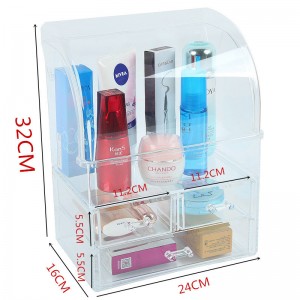Říj . 11, 2024 17:30 Back to list
Creative Display Ideas for Showcasing Optical Products in Retail Environments
The Art of Optical Shop Display Enhancing Customer Experience
In today's retail landscape, the way products are displayed significantly influences customer behavior and sales. The optical shop, where eyewear plays a crucial role, is no exception. An effective optical shop display not only showcases eyewear but also creates an inviting atmosphere that enhances customer experience. This article will delve into the essential components of optical shop display, from strategic layout to the use of color and lighting, emphasizing their impact on customer engagement and sales.
1. Understanding Customer Flow
The design of an optical shop should encourage a seamless flow of customers. Observing the natural path that customers take as they enter the shop can inform the layout. Generally, customers are more inclined to explore displays that are immediately visible upon entry. Therefore, placing high-quality frames and promotional items near the entrance can capture attention quickly. Additionally, creating a logical pathway through the store ensures that customers can easily navigate and find what they need without frustration.
2. Eye-Catching Displays
The primary goal of any display is to attract attention. In an optical shop, the choice of frames and lenses should be arranged in a way that highlights their unique features. Using display stands at different heights creates visual interest and draws the eyes upward, allowing for a more dynamic presentation of products. Brands that utilize striking visuals are more likely to catch the attention of potential customers. Moreover, integrating seasonal themes or promotions into the displays can generate excitement and increase foot traffic.
3. The Role of Lighting
Lighting is a pivotal aspect of any retail display, especially in an optical shop. Proper lighting not only highlights the products but also affects the overall mood of the space. Bright, focused lighting can bring out the colors and details of the frames, helping customers see what they will be buying. Consider using a combination of ambient and task lighting; while ambient lighting ensures a comfortable atmosphere, task lighting can be directed toward specific displays to make them stand out. Moreover, adjustable lighting can allow for seasonal changes or different promotional events.
optical shop display

4
. Color PsychologyColors evoke emotions and can significantly affect purchasing decisions. In optical shops, it is essential to choose a color scheme that resonates with the target market. For instance, cool colors like blue and green can create a calming atmosphere, whereas warmer colors like red and orange can stimulate excitement. The colors of the frames themselves are equally important; for example, a vibrant display of colored frames can entice a younger demographic, while classic colors tend to appeal to older customers. The strategic use of color in displays should align with the brand identity and the desired customer experience.
5. Interactive Elements
Modern consumers appreciate interactivity in their shopping experiences. Incorporating interactive elements in optical shop displays can engage customers and encourage them to spend more time in-store. For example, providing virtual try-on technology can allow customers to see how different frames look on their faces without the need to try them on physically. Additionally, incorporating touchpoints where customers can feel the quality of the materials or see the technology behind the lenses can build trust and interest in the product.
6. Personalization and Storytelling
Incorporating personalization into displays can make customers feel more connected to the brand. This can be achieved through storytelling — sharing the unique qualities of a brand or a collection can resonate with customers. For instance, highlighting craftsmanship or eco-friendly materials can appeal to environmentally conscious consumers. Moreover, featuring local artists or collaborations can create a sense of community and interest among customers.
Conclusion
The optical shop display is an essential aspect of retail that goes beyond merely presenting products. By understanding customer flow, creating eye-catching displays, utilizing effective lighting, leveraging color psychology, incorporating interactivity, and embracing personalization through storytelling, optical shops can enhance the overall shopping experience. In an industry increasingly shifting toward online shopping, the physical retail space must remain inviting and engaging, ensuring that customers feel valued and inspired to make a purchase. With thoughtful display strategies, optical shops can effectively capture attention and increase sales, all while crafting a memorable experience for their customers.
-
The Benefits of Electronic Shelf Labels for Modern Stores
NewsJul.01,2025
-
Space-Saving Retail Store Furniture Designs for Small Shops
NewsJul.01,2025
-
Slatwall vs. Gridwall: Which Store Fixture is Right for Your Business?
NewsJul.01,2025
-
Shop Fittings: Essential Elements for a Functional Retail Space
NewsJul.01,2025
-
How to Design a Minimalist Cosmetic Shop Display
NewsJul.01,2025
-
Creative Clothes Shop Display Ideas to Attract More Customers
NewsJul.01,2025


















































































































